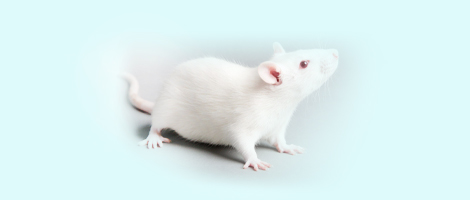| 1 |
翟新验, 曲萍, 马英, 等. SPF鸡在禽病防控中的应用[J]. 实验动物科学, 2013, 30(4):59-61. DOI: 10.3969/j.issn.1006-6179.2013.04.016 .
|
|
ZHAI X Y, QU P, MA Y, et al. Application of SPF chicks in prevention and control of avian diseases[J]. Lab Anim Sci, 2013, 30(4):59-61. DOI: 10.3969/j.issn.1006-6179.2013.04.016 .
|
| 2 |
刘钧, 翟新验. SPF级实验动物在兽用疫苗检定中的应用[J]. 实验动物科学, 2014, 31(2):57-58. DOI: 10.3969/j.issn.1006-6179.2014.02.016 .
|
|
LIU J, ZHAI X Y. SPF laboratory animals application on veterinary vaccines assessment[J]. Lab Anim Sci, 2014, 31(2):57-58. DOI: 10.3969/j.issn.1006-6179.2014.02.016 .
|
| 3 |
韩凌霞, 孟兴, 佟相慧, 等. 实验动物SPF鸡质量控制标准介绍[J]. 中国比较医学杂志, 2019, 29(3):72-78. DOI: 10.3969/j.issn.1671-7856.2019.03.012 .
|
|
HAN L X, MENG X, TONG X H, et al. Introduction of standards on laboratory animals for specific-pathogen-free chicken[J]. Chin J Comp Med, 2019, 29(3):72-78. DOI: 10.3969/j.issn.1671-7856.2019.03.012 .
|
| 4 |
朱瑞良, 张绍学, 牛钟相. AA肉种鸡奇异变形杆菌病流行病学调查[J]. 中国畜禽传染病, 1994, 16(4): 48-49.
|
|
ZHU R L, ZHANG S X, NIU Z X. Epidemiological investigation of Proteus mirabilis in AA broiler breeders[J]. Chin J Prev Vet Med, 1994, 16(4): 48-49.
|
| 5 |
ZHANG L Y, HUANG M Y, LI Y, et al. Association of three beta-defensin gene (AvBD4, AvBD5, AvBD14) polymorphisms with carrier-state susceptibility to salmonella in chickens[J]. Br Poult Sci, 2020, 61(4):357-365. DOI: 10.1080/00071668. 2020. 1752913 .
|
| 6 |
熊忠良, 汪宏才, 赵海忠, 等. 浅谈几种实验动物在兽用生物制品试验研究中的应用[J]. 湖北畜牧兽医, 2010, 31(8):10-12. DOI: 10.16733/j.cnki.issn1007-273x.2010.08.019 .
|
|
XIONG Z L, WANG H C, ZHAO H Z, et al. Discussion on the application of several experimental animals in the experimental research of veterinary biological products[J]. Hubei J Anim Vet Sci, 2010, 31(8):10-12. DOI: 10.16733/j.cnki.issn1007-273x.2010.08.019 .
|
| 7 |
聂文军, 杜君, 王敏. 浦口区草鸡鸡滑液囊支原体病流行情况调查报告[J]. 畜禽业, 2021, 32(6):86-87, 89. DOI: 10.19567/j.cnki.1008-0414.2021.06.053 .
|
|
NIE W J, DU J, WANG M. Investigation report on the epidemic situation of mycoplasma synovialis in grass chickens in Pukou District[J]. Livest Poult Ind, 2021, 32(6):86-87, 89. DOI: 10.19567/j.cnki.1008-0414.2021.06.053 .
|
| 8 |
ARMOUR N K, FERGUSON-NOEL N. Evaluation of the egg transmission and pathogenicity of Mycoplasma gallisepticum isolates genotyped as Ts-11[J]. Avian Pathol, 2015, 44(4):296-304. DOI: 10.1080/03079457.2015.1044890 .
|
| 9 |
YADAV J P, TOMAR P, SINGH Y, et al. Insights on Mycoplasma gallisepticum and Mycoplasma synoviae infection in poultry: a systematic review[J]. Anim Biotechnol, 2022, 33(7):1711-1720. DOI: 10.1080/10495398.2021.1908316 .
|
| 10 |
张桂英. 鸡肠炎型大肠杆菌病诊治[J]. 四川畜牧兽医, 2022, 49(12): 55-56.
|
|
ZHANG G Y. Diagnosis and treatment of enteritis-type Escherichia coli in chickens[J]. Sichuan Anim Vet Sci, 2022, 49(12): 55-56.
|
| 11 |
晏志勋, 张剑, 张尧, 等. 全血与血清平板凝集试验检测鸡白痢的对比[J]. 畜牧与兽医, 2017, 49(10):106-109.
|
|
YAN Z X, ZHANG J, ZHANG Y, et al. Comparison of the whole blood and serum platelet agglutination tests for pullorum[J]. Anim Husb Vet Med, 2017, 49(10):106-109.
|
| 12 |
邵媛媛, 王洪社. 1例鸡肠炎型大肠杆菌病的诊断与治疗[J]. 养殖与饲料, 2022, 21(11): 112-114. DOI: 10.13300/j.cnki.cn42-1648/s.2022.11.024 .
|
|
SHAO Y Y, WANG H S. Diagnosis and treatment of a case of enteritis-type Escherichia coli disease in chickens[J]. Anim Farm Feed, 2022, 21(11): 112-114. 10.13300/j.cnki.cn42-1648/s.2022.11.024 .
|
| 13 |
常方方. A\B和J亚群禽白血病病毒抗体ELISA检测方法的建立及初步应用[D]. 北京: 中国农业科学院, 2021. DOI: 10.27630/d.cnki.gznky.2020.000823 .
|
|
CHANG F F. Development and preliminary application of indirect enzyme-linked immunosorbent assay for the detection of subgroup A\B and subgroup J avian leukosis virus antibodies[D]. Beijing: Chinese Academy of Agricultural Sciences, 2021. DOI: 10.27630/d.cnki.gznky.2020.000823 .
|
| 14 |
BING L Y, DE L L, HAI B Z, et al. Development of an antigen-capture ELISA for the detection of avian leukosis virus p27 antigen [J]. J Virol Methods, 2013, 187(2): 278-283. DOI: 10.1016/j.jviromet.2012.11.027 .
|
| 15 |
王慧, 程小果, 郭建友, 等. 近期鸡群I群禽腺病毒的流行与防治[J]. 上海畜牧兽医通讯, 2016(2):62-63. DOI: 10.14170/j.cnki.cn31-1278/s.2016.02.027 .
|
|
WANG H, CHENG X G, GUO J Y, et al. Prevalence and control of avian adenovirus group I in chickens recently[J]. Shanghai J Anim Husb Vet Med, 2016(2):62-63. DOI: 10.14170/j.cnki.cn31-1278/s.2016.02.027 .
|
| 16 |
杜梅卓, 张才旦卓玛. 鸡产蛋下降综合征临床症状与预防[J]. 畜牧兽医科学(电子版), 2022(2):70-71. DOI: 10.3969/j.issn.2096-3637.2022.02.033 .
|
|
DU M Z, ZHANG C D Z M. Clinical symptoms and prevention of chicken egg drop syndrome[J]. Graziery Vet Sci Electron Version, 2022(2):70-71. DOI: 10.3969/j.issn.2096-3637.2022.02.033 .
|
| 17 |
RAJ G D, RATNAPRABA S, MATHESWARAN K, et al. Comparison of hemagglutination inhibition test and ELISA in quantification of antibodies to egg drop syndrome virus[J]. Acta Virol, 2004, 48(3):183-187.
|
| 18 |
吕钊, 马国明, 牛登云, 等. 2021年中国部分地区鸡传染性贫血病毒VP1基因遗传变异分析[J]. 中国家禽, 2023, 45(4):64-68. DOI: 10.16372/j.issn.1004-6364.2023.04.011 .
|
|
LÜ Z, MA G M, NIU D Y, et al. VP1 gene variability in chicken infectious Anemia virus in parts of China during 2021[J]. China Poult, 2023, 45(4):64-68. DOI: 10.16372/j.issn.1004-6364.2023.04.011 .
|
| 19 |
谷风柱. 肉鸡网状内皮细胞增生症的流行趋势及防控措施[J]. 今日畜牧兽医, 2011(12):45-46.
|
|
GU F Z. Epidemic trend and control measures of reticuloendotheliosis in broilers[J]. Today Anim Husb Vet Med, 2011(12):45-46.
|
| 20 |
WAMER D. 多重荧光免疫分析技术在SPF鸡的应用[J]. 中国家禽, 2012, 34(19):39. DOI: 10.16372/j.issn.1004-6364.2012.19.030 .
|
|
WAMER D. Application of multiplex fluorescence immunoassay in SPF chickens[J]. China Poult, 2012, 34(19):39. DOI: 10.16372/j.issn.1004-6364.2012.19.030 .
|
| 21 |
方博, 付新亮, 张桂红. 禽脑脊髓炎及其防控[J]. 广东饲料, 2016, 25(9):47-49. DOI: 10.3969/j.issn.1005-8613.2016.09.013 .
|
|
FANG B, FU X L, ZHANG G H. Avian encephalomyelitis and its prevention and control[J]. Guangdong Feed, 2016, 25(9):47-49. DOI: 10.3969/j.issn.1005-8613.2016.09.013 .
|
| 22 |
陈健. 鸡毒支原体病的流行病学、临床表现、诊断与防控措施[J]. 现代畜牧科技, 2021(11):87-88. DOI: 10.19369/j.cnki.2095-9737.2021.11.041 .
|
|
CHEN J. Epidemiology, clinical manifestations, diagnosis and control measures of mycoplasma gallisepticum[J]. Mod Anim Husb Sci Technol, 2021(11):87-88. DOI: 10.19369/j.cnki.2095-9737.2021.11.041 .
|
| 23 |
常超越, 闫艳娟, 李蕴玉, 等. 蛋种鸡禽白血病与大肠杆菌病混合感染的诊治[J]. 黑龙江畜牧兽医, 2018,554(14):130-132. DOI: 10.13881/j.cnki.hljxmsy.2017.07.0293 .
|
|
CHANG C Y, YAN Y J, LI Y Y, et al. Diagnosis and treatment of mixed infection of avian leukemia and colibacillosis in laying hens[J]. Heilongjiang Anim Sci Vet Med, 2018,554(14):130-132. DOI: 10.13881/j.cnki.hljxmsy.2017.07.0293 .
|
| 24 |
王秋生. 一例禽白血病与大肠杆菌、沙门氏菌混合感染诊断[J]. 畜牧兽医科学(电子版), 2020(17):11-13. DOI: 10.3969/j.issn.2096-3637.2020.17.004 .
|
|
WANG Q S. Diagnosis of mixed infection of avian leukemia with Escherichia coli and Salmonella [J]. Graziery Vet Sci Electron Version, 2020(17):11-13. DOI: 10.3969/j.issn.2096-3637.2020.17.004 .
|
| 25 |
饶明章, 袁丽霞, 赵子君, 等. 黄羽祖代公鸡精液作为禽白血病净化检测材料的应用研究[J]. 畜牧兽医学报, 2017, 48(1):124-131. DOI: 10.11843/j.issn.0366-6964.2017.01.015 .
|
|
RAO M Z, YUAN L X, ZHAO Z J, et al. Applied research of yellow feather grandparent roosters Semen as test sample in avian leukosis eradication program[J]. Chin J Anim Vet Sci, 2017, 48(1):124-131. DOI: 10.11843/j.issn.0366-6964.2017.01.015 .
|
| 26 |
YUN B L, LI D L, ZHU H B, et al. Development of an antigen-capture ELISA for the detection of avian leukosis virus p27 antigen[J]. J Virol Methods, 2013, 187(2):278-283. DOI: 10.1016/j.jviromet.2012.11.027 .
|
| 27 |
ZHANG X T, LIAO M, JIAO P R, et al. Development of a loop-mediated isothermal amplification assay for rapid detection of subgroup J avian leukosis virus[J]. J Clin Microbiol, 2010, 48(6):2116-2121. DOI: 10.1128/JCM.02530-09 .
|
| 28 |
张亚文, 崔帅, 赵颖洁, 等. 通过公鸡血液和精液禽白血病病毒分离净化禽白血病的研究[J]. 中国预防兽医学报, 2021, 43(3):319-323. DOI: 10.3969/j.issn.1008-0589.202003001 .
|
|
ZHANG Y W, CUI S, ZHAO Y J, et al. Study on the correlation between the results of avian leukosis viral isolation from blood and semen of cocks[J]. Chin J Prev Vet Med, 2021, 43(3):319-323. DOI: 10.3969/j.issn.1008-0589.202003001 .
|







 )
)
 )
)